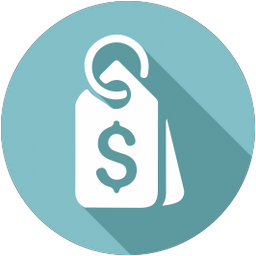How To Use Price Framing To Your Advantage
Relevant topics Archive, Strategy
Price comparison is key to consumer buying decisions. Does price presentation predict purchase choice? A 2019 American Marketing Association study published by David Hardisty, Dale Griffin, and Thomas Allard confirmed the critical impact of price comparison framing on consumer marketplace decisions.
Research results demonstrate that consumers consistently chose a more expensive product among their options when the price difference was emphasized rather than the actual item price. Four individual studies confirmed this conclusion when measuring the impact of price framing on customer choices.
Unexpected outcome of initial study
Study subjects were presented two technically identical computer monitor purchase options. A simulated web page offered a 23” monitor priced at $199.99 and a 27” monitor at $259.99. Three groups of subjects were polled regarding their purchase selections. The $199.99 value monitor was clearly shown. Study results were fairly dramatic.
- Group One was approached with differential price framing, revealing only that the larger monitor was offered “for $60.00 more.” In this group, 58% of the subjects chose the more expensive model.
- Group Two was approached with inclusive price framing, presenting actual dollar pricing of $259.00 for the more expensive larger unit. Only 42% chose the more expensive monitor.
- Group Three was offered both units with prices expressed in both dollar amounts per unit and highlighting the “for $60 more” aspect on the larger unit only. 52% chose the more expensive monitor.
What made the difference? The brain areas responsible for decision making are averse to making complex mental calculations. Highlighting “for $60 more” shifts the buyer’s attention from the total price which is a large amount to the price difference which is relatively small. In this simplified logic, that expensive option seems to be a better bargain for consumers, regardless of its identical cost.
Result validation by other surveys
Another study compared print media subscription choices. Study subjects were offered subscriptions to the New York Times. Two groups were offered a standard option, phone app and online subscription for $9.99 monthly. A Premium option added podcast programming and a crossword puzzle to the base package for a $16.99 total cost.
- Group One received the offer with the premium package priced at $16.99. Only 23% of subjects in this group chose the premium package.
- Group Two received the premium offer at “+$7.00 monthly”. 47% of subjects chose the premium package which the price differential was the focal point.
A third study offering second-hand bicycles to consumers offered two options to the 221 study participants. A three speed, standard equipped bicycle was priced at $150. A bicycle offering brand name optional equipment and more speeds ran $210.
- In Group One, prices of both options were stated in total price form. Only 50% of the subjects chose the higher-priced option.
- In Group Two, the premium bicycle billed as “$60 more.” 70% of the subjects chose the higher-priced option.
A fourth study involving 471 test subjects marketed wine glasses to participants. Two sets of high-end wine glasses were offered in combinations of four glasses at $29 or a set of 8 at $41. Consistent with the above 3 studies, test subjects chose the higher-priced set when the price differential was highlighted.
price framing in daily life
These examples illustrate how common pricing strategies use these principles in daily life. Auto sales representatives frequently pitch additional features or optional equipment after having reached agreement on an initial price from a customer. Options such as custom wheels or rust prevention packages are presented “for just another xx dollars per month”, omitting mention of the full price increase or bottom line impact. Such last minute additions are a longstanding sales tradition. In television product pitches, “As Seen On TV” sellers offer product doubling “for only additional shipping costs”. The cost add on is not mentioned in the offer until the buyer begins the formal purchase process by telephone or online. Consumers can learn how to more effectively control their spending impulses by understanding these strategies. Marketing and sales professionals can boost big-ticket sales volume by learning and applying these classic techniques.
Take home points
- Presenting products with price differentials, rather than absolute prices, leads consumers to buy more expensive products
- Understanding how price framing works can both aid consumers in their spending behavior and marketeers in their sales strategies
Further Reading
-
Product or Price first? How Order Increases Sales
Imagine walking into a clothing store and the first thing you see is a rack of jeans clearly labeled “€49.99”. With this price in mind, you start looking at the different jeans. As you scavenge those denims, you might find something you like.
Now let's look at a different scenario: imagine walking past a display where you see a pair of jeans. When you walk over to take a closer look, you see that it says “€49.99” on the tag. Will you go in and look for the pair of jeans?
In both cases, the denims and importantly, the price are the same (e.g., you have the same kind of information). However, depending on which one you see first, will you make the same kind of decision?


